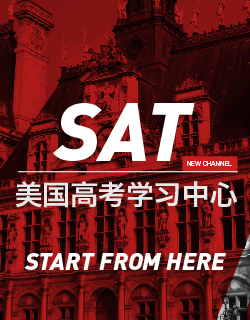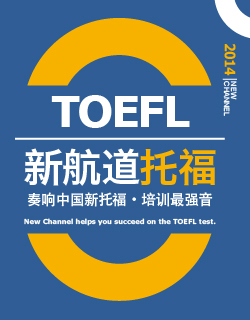托福TPO43听力题目+答案+MP3音频下载
Conversation 1
1.What do the speakers mainly discuss?
A The lack of functional printers in the student center
B The large crowds in the computer labs
C The skills that computer and printer technicians need
D The expected delivery of new computer printers
2. Why does the man mention the engineering school?
A To direct the student to a place where she can finish her work
B To indicate who serves as computer technicians
C To indicate where computer technicians are currently busy fixing printers
D To indicate that the problem with the printers is not limited to the student center
3. Why does the man mention the president of the college?
A To suggest that the president is too busy to get involved in this issue
B To indicate that the president proposed hiring additional technicians
C To explain that the president decided that purchasing new printers would be too costly
D To point out the president’s involvement in acquiring new printers
4. What does the man offer to do?
A Replace empty ink cartridges in printers in the student center
B Allow the student to use computer centers that had been closed
C Send a technician to the student center to repair the printers
D Send an e-mail to the students to explain when the new printers will be installed
5. Why does the man say this:
A To indicate that he does not understand the purchasing process
B To assure the student that the printers will be installed next month
C To suggest that the student should contact the purchasing office for further information
D To help explain the reason for the delay in receiving the new printers
Conversation2
1. What are the speakers mainly discussing? (Click on 2 answers.)
A he man’s concerns about the midterm exam
B An acting award that Professor Davis recently won
C A professor’s playwriting accomplishments
D Arrangements for attending a local play
2. What does Professor Davis plan to give the student? (Click on 2 answers.)
A Directions to a theater
B A list of students' addresses
C Tickets to a play
D A study guide for the midterm exam
3. Why does Professor Davis want the students to attend a reception?
A So that the students can hear a talk about script adaptation
B So that the students can see a professor receive an award
C So that the students can ask an actor questions
D So that the students can meet the director of a play
4. What does the professor imply about script adaptation?
A It depends almost entirely on the writer’s imagination.
B It is more often based on novels than on short stories.
C It is more difficult than the man thinks it is.
D It gives playwrights more commercial success than writing original plays does
5. Why does the professor say this:
A To express doubt about the quality of local plays
B To indicate that the man’s assumption is wrong
C To encourage the man to see local productions
D To indicate that she agrees with the man
Lecture 1
1. What is the main purpose of the lecture?
A To explain how the red pigment in leaves breaks down
B To show that leaf color varies based on the tree species
C To introduce a theory about why leaves turn a particular color
D To explain how chlorophyll protects trees in autumn
2.What does the professor imply when she explains why leaves are green?
A She wants to correct a common misconception about the topic.
B She thinks the students are probably already familiar with the material.
C She believes the process is too complicated to discuss in depth.
D She knows that students are often confused about the functions of chlorophyll
3. What does the professor mean when she says that the classic theory is partially right?
A It describes what happens in the summer but not what happens in autumn
B It describes what happens in tree leaves but not what happens in leaves of other plants
C It explains how pigments are synthesized but not how they break down.
D It explains some cases of color change in tree leaves but not all cases.
4. Why does the professor mention painting a car?
A To question why a large amount of anthocyanin is produced just before leaves fall
B To explain why most leaves turn red instead of other colors
C To remind students how cooler temperatures affect the color of leaves
D To show how anthocyanin absorbs sunlight to produce food for trees
5. The professor mentions theories about why leaves turn red that involve predatory insects and fungi. What is her opinion about those theories?
A They are based on careful research.
B They do not completely explain the phenomenon.
C They have not received enough attention.
D They have been proved to be incorrect.
6. According to the professor, why does anthocyanin appear on the upper side of some leaves?
A To help chlorophyll absorb the sunlight
B To maximize the leafs utilization of sunlight
C To accelerate the breakdown of chlorophyll
D To protect an important process from the sunlight
Lecture 2
1. What is the main purpose of the lecture?
A To explain a mechanism behind the ability to approximate numbers
B To explore the connection between ability in symbolic mathematics and the ability to approximate numbers
C To show the importance of new research into the ability to solve complex mathematical problems
D To demonstrate that children, adults, and animals have a similar ability to approximate numbers
2. Why does the professor mention six-month-old infants?
A To emphasize that ANS is largely innate
B To refute the claim that symbolic mathematics is learned
C To point out the difficulty of testing mathematics ability in very young children
D To contrast the way infants learn with how older children learn
3. Why does the professor stress that the dots in the experiment flashed on the computer screen for only a fraction of a second?
A To emphasize that humans’ ANS ability is more developed than that of animals
B To point out that it was not possible to complete the task using formal mathematics
C To show a contrast between the dot experiment and the color-naming experiment
D To explain, in part, how subjects were chosen for the experiment
4. What did researchers observe in the study of fourteen-year-old children?
A The children with strong ANS skills also scored well on color-naming tests
B The children were more likely to make mistakes when there were small numbers of blue and yellow dots
C The ANS skills of the children had improved over time.
D There were large differences in the ANS skills of the children tested.
5. Why does the professor mention that the subjects of the experiment were also tested in reading and word knowledge?
A To show that ANS skills are not linked with abilities in those areas
B To emphasize the thoroughness of the researchers
C To point out that ANS and other skills are learned in a similar way
D To contrast learned skills with innate abilities
6. What is the professor’s opinion of using instruction in ANS to improve children's performance in formal mathematics?
A It is likely that instruction in ANS would lead to improvement in areas other than formal mathematics.
B It would be important for the instruction in ANS to begin when children are very young.
C It is unclear whether instruction in ANS would improve performance in formal mathematics.
D it is more likely that instruction in formal mathematics would improve children’s ANS ability.
Lecture 3
1. What is the lecture mainly about?
A Early influences that shaped the career of Theodor Seuss Geisel
B The use of Dr. Seuss books in modern elementary schools
C The literary and artistic approach of Theodor Seuss Geisel
D Two prominent authors of twentieth-century children’s literature
2. According to the professor, why did teachers oppose using Dr. Seuss books in the classroom during the 1950s and 1960s?
A Teachers thought the books were boring
B Teachers associated the books with play rather than schoolwork
C Dr. Seuss books used vocabulary that was not on the Dolch list.
D Dr. Seuss books could not be used to teach subjects other than reading.
3. Why does the professor mention the citation awarded to Geisel by the Pulitzer Prize Committee?
A To emphasize how long it took for Geisel,s literary contributions to be appreciated
B To emphasize the difficulty of writing books that appeal to both children and adults
C To explain how authors of children’s literature were typically honored
D To explain why Geisel’s books finally became popular
4. What does the professor say about Geisel's work as an illustrator?(Click on 2 answers)
A Geisel's approach to drawing scenery is more sophisticated than it first appears
B Geisel’s style was strongly influenced by earlier illustrators of children’s books.
C Geisel’s human characters all look very much alike.
D Geisel’s style is widely taught in art schools today.
5. What was the connection between Geisel and John Hersey?
A Their writing styles were remarkably similar.
B They collaborated on an article about teaching children to read
C Hersey’s article inspired Geisel to write a new kind of book.
D Hersey wrote a novel that was inspired by Geisel’s career.
6. What is the professor’s opinion of Geisel’s book The Cat in the Hat?
A It is effective because its characters are people and animals rather than imaginary creatures
B it would be a better teaching tool if it had more challenging vocabulary.
C It wrongly encourages children to break their parents’ rules.
D It cleverly presents moral issues in an entertaining way.
Lecture 4
1. What does the professor mainly discuss?
A Methods of converting radio waves into sound waves
B Features of different types of electromagnetic radiation
C The various paths that very-low-frequency waves follow on Earth
D The emission and detection of very-low-frequency waves
2. What is one difference between radio waves and sound waves that the professor emphasizes?
A Radio waves have a lower frequency.
B Water stops radio waves from spreading but does not stop sound waves
C Unlike sound waves, radio waves can travel outside Earth's atmosphere.
D Naturally occurring radio waves are difficult to detect on Earth at night.
3. What explanation does the professor give for the constant occurrence of VLF emissions on Earth?
A At any given time, some part of the world is experiencing sunrise or sunset
B Waveguides constantly form in the atmosphere.
C Earth’s magnetosphere directs interplanetary waves toward Earth’s surface.
D Lightning occurs constantly on the planet.
4. Why are sunrise and sunset the best times to listen to VLF signals?
A Because thunderstorms are most likely to occur then
B Because radio waves travel through natural waveguides then
C Because higher-frequency signals are less active then
D Because temperatures are not extremely high or low then
5. Why does the professor discuss whistlers and tweeks?
A To illustrate that the path a VLF wave travels can affect the sound it makes on a radio
B To point out that VLF waves can affect the sounds heard on a household or car radio
C To describe how a colleague discovered the origin of VLF waves
D To clarify the difference between VLF waves and other kinds of waves
6. What does the professor imply when he says this:
A He needs to think before he can answer the woman's question.
B The woman has underestimated how often VLF waves can be detected.
C The woman does not realize that waiting for a thunderstorm can take a long time.
D The woman does not understand the relationship between thunderstorms and lightning
托福TPO43听力答案
CONVERSATION1:1-5.ABDAB
CONVERSATION2:1.CD 2.BC 3-5.CCB
LECTURE1:1-6.CBDABD
LECTURE2:1-6.BABDAC
LECTURE3:1-3.CBA 4.AC 5-6.CD
LECTURE4:1-6.ACDBAB
上海新航道整理!由于音频文件不便上传,想要托福TPO43听力题目+答案+MP3音频下载的同学,请提交“姓名+电话+邮箱”,我们将于15个小时内发送给您!
更多托福TPO大全 查看,请点击:http://www.shxhd.cn/tpo/







